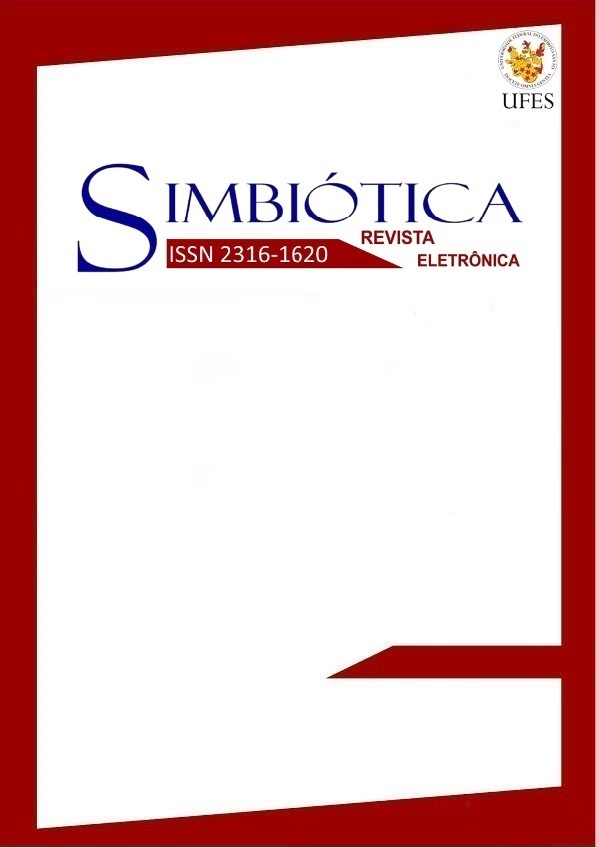A heráldica em A demanda do Santo Graal
DOI:
https://doi.org/10.47456/simbitica.v3i1.14622Resumen
Analisa os brasões que integram a tradução portuguesa da novela medieval A demanda do Santo Graal. Examina a relação entre os referidos ornamentos alegóricos e a função narrativa dos cavaleiros, interpretados à luz da doutrina cristã medieval e da ordem de cavalaria que regem ideologicamente a novela. Investiga o tema a partir das pesquisas de Lênia Márcia Mongelli e Heitor Megale sobre a novela de cavalaria medieval e dos estudos de Jenny Dreyfus e Michel Pastoureau sobre a heráldica.
Resumen: Este artículo analiza los escudos descritos en A demanda do Santo Graal, una traducción al portugués de la novela medieval francesa. También se estudia la relación entre los adornos alegóricos citados y la función narrativa de los caballeros, interpretado de acuerdo con la doctrina cristiana medieval ya la orden de caballería que dirigen ideológicamente el romance. Se investiga este tema considerando los estudios de Lênia Márcia Mongelli y la investigación de Heitor Megale sobre el romance caballeresco medieval y estudios Jenny Dreyfus sobre heráldica.
Palabras clave: A demanda do Santo Graal - crítica y interpretación; personaje medieval; heráldica medieval.
Abstract: This paper analyses the shields described in A demanda do Santo Graal, a Portuguese translation of the French Medieval romance. It also studies the relation between the cited allegorical ornaments and the narrative function of the knights, interpreted according to Medieval Christian doctrine and to the chivalry order which direct ideologically the romance. It investigates this theme considering Lênia Márcia Mongelli and Heitor Megale’s research about Medieval chivalry romance and Jenny Dreyfus’ studies about heraldry.
Keywords: A demanda do Santo Graal – criticism and interpretation; medieval character; medieval heraldry.
Descargas
Publicado
Número
Sección
Licencia
Derechos de autor 2020 Vanessa Schimid

Esta obra está bajo una licencia internacional Creative Commons Atribución-NoComercial-SinDerivadas 4.0.
Autores que publicam nesta revista concordam com os seguintes termos:
a. Autores mantém os direitos autorais e concedem à revista o direito de primeira publicação, com o trabalho simultaneamente licenciado sob a Creative Commons - Atribuição-NãoComercial 4.0 Internacional.
b. Compartilhar - copiar e distribuir o material em qualquer meio ou formato.
Adaptar - remix, transformar e construir sobre o material para qualquer finalidade, inclusive comercial.
c. Autores têm autorização para assumir contratos adicionais separadamente, para distribuição não-exclusiva da versão do trabalho publicada nesta revista (ex.: publicar em repositório institucional ou como capítulo de livro), com reconhecimento de autoria e publicação inicial nesta revista.
d. Autores têm permissão e são estimulados a publicar e distribuir seu trabalho online (ex.: em repositórios institucionais ou na sua página pessoal) a qualquer ponto antes ou durante o processo editorial, já que isso pode gerar alterações produtivas, bem como aumentar o impacto e a citação do trabalho publicado (Veja O Efeito do Acesso Livre).
Authors who publish in this journal agree to the following terms:
a. Authors retain the copyright and grant the magazine the right of first publication, with work simultaneously licensed under the CCreative Commons - Atribuição-NãoComercial 4.0 Internacional.
b. Share - copy and distribute the material in any medium or format.
Adapt - remix, transform and build on the material for any purpose, including commercial.
c. Authors are authorized to take additional contracts separately, for non-exclusive distribution of the version of the work published in this journal (eg, publish in institutional repository or as a book chapter), with acknowledgment of authorship and initial publication in this journal.
d. Authors are allowed and encouraged to publish and distribute their work online (eg.: in institutional repositories or on their personal page) at any point before or during the editorial process, as this can generate productive changes as well as increase the impact and the citation of the published work (See The Effect of Free Access).











